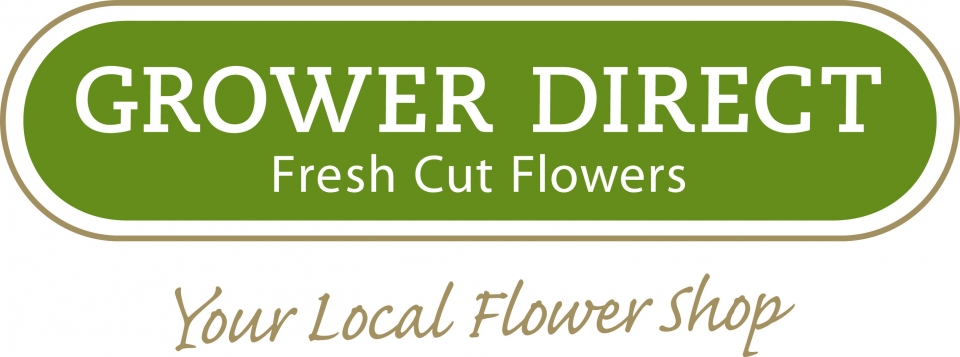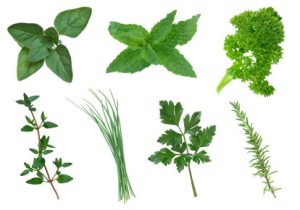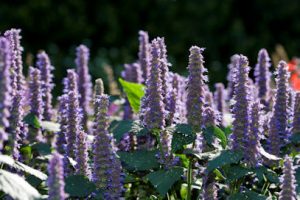![]() Prices in Canadian Dollars.
Prices in Canadian Dollars.![]() Prefer to call and speak to a floral agent? 1-877-277-4787
Prefer to call and speak to a floral agent? 1-877-277-4787
Medical Herbs
Medical Herbs
A medicinal plant is a plant that is either cultivated or wildcrafted (collected from the wild) for its medicinal value. Plants have been used in treating human ailments for thousands of years and are the source of a large proportion of medicines. In Canada medicinal plants have a long history of use with literally hundreds of species being used by First Nations Canadians in traditional medicine. North American ginseng is Canada’s most important medicinal crop, while other major crops include Echinacea, ginkgo biloba, liquorice, and St. John’s Wort.
As consumers become better educated in the methods of self medication with herbs they will continue to demand a consistent supply of high quality herbs. Canadian growers will have an advantage because of their reputation for quality plants, stringent standards for chemical applications and high technology processing capabilities.
Since there are so many plants with medicinal properties, there are few commonalities among the species in demand. In general you want to produce a healthy, insect and disease free plant with a minimum of chemical treatments, preferably organic.
There are also many species that can be collected from the wild, however, in some cases this is not the best environmentally friendly way to secure your supply so you and the environment would be better off growing the plants in the garden.
Set up a drying area for your crop. This can be racks where you hang bundles of stems, or you may want to lay out loose leaves and stems on a flat screen. Quick drying in a well ventilated warm room will give the best results.
For some plants you want to harvest the roots or the flowers and not necessarily the leaves so you need to know what parts to harvest and when, and how to handle them after harvest. For this reason it’s best to start with plants that you are familiar with, that you have grown before or even have used as a herbal remedy before. There is a great variation in the amounts of active ingredients in plants depending on their cultural conditions, harvesting methods and storage methods. It becomes important to select out the best plants and handle them in the best manner.
Here are a few species of medicinal plants that we recommend as easy to grow and handle.
Anise Hyssop (Agastache foeniculum)
Native Plant. Mint family. Direct seed. Could Anise Hyssopbe fall planted. Can be propagated from root divisions or stem cuttings. Licorice scented leaves used in desserts and dried in tea and for medicinal uses. Harvest leafy stems before Flowering. Flower stalks are attractive, blue, and can be collected for ornamental uses. Harvest when they are firm and well filled and hang to dry. Seeds are valuable and produced prolifically, collect these too. This plant is highly recommended as it is a multi purpose plant. You can use the leaves, fresh or dried, the plant divisions, the Flowers fresh or dried, the seeds and even the stems.
Borage (Borago officinalis)
Annual. Direct seed. Repeat plantings. Can be planted in late fall and again in early spring. Self sows. Young leaves have a light cucumber flavor. Mature Flowers used fresh in salads. Easy.
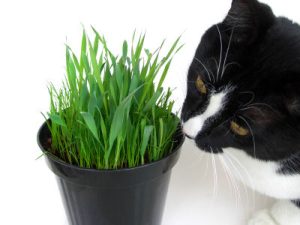 Catnip (Nepeta cataria)
Catnip (Nepeta cataria)
Perennial. Very easy from direct seeding, transplants or cuttings. Mint family. Used as a Catnipcat treat, and sometimes for tea. For these herbal uses, collect leafy, non-Flowering stems in small bunches. Tie with a rubber band and hang to dry. Can be used fresh or dried as a cat treat. Catnip has attractive Flower stalks/seed heads, too. When the Flower stalks develop a purple blush, pick 10 – 15 Flowering stalks per bundle and hang to dry. Produces seed prolifically, so collect this from more mature stems. Catmint is not the same as catnip, choose the true catnip.
Chamomile (Matricaria chamomilla).
Annual. Try direct seeding in late fall or early spring. Self Sows. Fragrant Flower heads are dried for tea. Lay out to dry and pack in clean plastic bags when completely dry.
Dandelion Root. (Taraxacum officinale)
There are actually three species of dandelion common to Alberta, T. ceratophorum, and T. laevigatum as well as T. officinale. The roots are used like chicory for a coffee substitute and a number of other medicinal purposes. They should be scrubbed to remove the soil and then dried.
Echinacea (Echinacea purpurea),
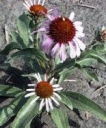 Perennial. Purple Coneflower, is well known to gardeners and wildflower enthusiasts. It is the most easily grown of the Echinacea species and has a fibrous root system. It’s one of North America’s most popular herbal products, and is used for helping prevent and treat colds, flu, respiratory ailments, urinary tract infections, and other infections. As an anti-infection agent, Echinacea extracts have also been used as a general immune system enhancer. At present, demand for Echinacea exceeds supply.
Perennial. Purple Coneflower, is well known to gardeners and wildflower enthusiasts. It is the most easily grown of the Echinacea species and has a fibrous root system. It’s one of North America’s most popular herbal products, and is used for helping prevent and treat colds, flu, respiratory ailments, urinary tract infections, and other infections. As an anti-infection agent, Echinacea extracts have also been used as a general immune system enhancer. At present, demand for Echinacea exceeds supply.
Best suited for a poor to moderately rich, well-drained soil with a high lime content preferred, Once established Echinacea is drought tolerant. Good soil drainage and frequent, shallow cultivation are necessary to produce more vigorous plants.
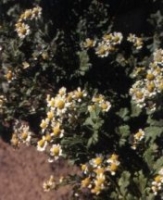 Feverfew (Tanacetum parthenium) Perennial.
Feverfew (Tanacetum parthenium) Perennial.
Grows up to 60 cm tall with yellow-green leaves and numerous daisy like flower heads. Feverfew has been used for hundreds of years as a medicinal plant and is claimed to have analgesic properties, reduce fever, anti-rheumatic, promote menstrual flow. Research has shown that Feverfew can reduce the frequency and intensity of migraine headaches. Feverfew can be propagated from seed, cuttings, and divisions. Grow in full sun in well drained loam soil enriched with manure for best results. Old flower heads should be removed to prevent self-seeding.
Hyssop (Hyssopus officinalis)
Very fragrant. Mint family. Direct seed, or transplants for a faster start. Will self sow. Used for potpourri, and dried Flower stalks resemble lavender stalks. Not edible, too strong flavored.
Lavender (Lavandula angustifolia)
Perennial. Mint family. A bushy, branching, pubescent shrub that will grow 0.3-2.0m high. Leaves are small, narrow, smooth edged, and blue-green in colour. Flowers are small, lavender-purple in colour, and grow in whorls of 6-10 blooms on spiky inflorescences. Lavender oil is one of the most important oils in aromatherapy, used as a folk remedy for acne, cancer, colic, faintness, flatulence, migraines, nausea, rheumatism, and many others. Sometimes used as a mild sedative, nervous exhaustion, disturbances of sleep.
The essential oil is used in perfumes, lotions, cosmetics, soaps, colognes, etc. Not very winter hardy, can dry out and freeze over winter so grow in protected sites, not subject to early spring thaws, east facing rather than south facing. Mulch well and water in fall, and don’t cut the plant down too short. Easy from seed. Can propagate from stem cuttings. Plants will increase in size over several years. Harvest Flower spikes, leaves and stems for use in potpourri and arrangements. Clean, organic Flowers can be used in cooking. Recommended.
 Mint. (Mentha) Perennial.
Mint. (Mentha) Perennial.
Many kinds of mint. Almost all are useful for something. Spearmint (Mentha spicata) is Peppermintthe most commonly used in cooking. It has a spear shaped, lanceolate leaf. Peppermint (M. piperita vulgaris) is less popular, but it makes a very nice tea. It has a round, often fuzzy leaf with a scalloped margin. Fancy types of mint are in high demand; Orange mint (M. piperita citrata), Apple mint, Ginger Mint, Pineapple Mint and so on.
Not all of these mints will be hardy in Alberta. Take cuttings or whole plants inside for winter if you want to save them. Look for variegated foliage, and different leaf shapes, but stay away from small leaved varieties like pennyroyal. Mint can be started from seed, but it cross pollinates freely, so if you want a certain variety you must propagate from root divisions, root sections and stem sections from a known variety.
The plants are very invasive, spreading by underground stolons. Mints enjoy cooler soil and more soil moisture than most plants. Try segregating an area just for mint, where it can fill the bed freely, and you can cultivate around the edges only if you want to control it. Mint will grow in low, moist areas where other plants will not. Collect fresh leafy stems and pack loosely into a plastic bag. Mint leaves are often carrying some soil on the tiny hairs on the undersides of the leaves. You may need to wash mint. Use at least two rinses. Use a good heavy mulch of straw or paper to avoid this problem.
For drying, tie handfuls into small bundles with a rubber band and hang to dry. Loose leaves and small stems can be laid out to dry in a flat pan or basket. Lower grades can be used in potpourri. Spearmint is a high volume crop, both fresh and dried. If you have an appropriate spot in the garden, we recommend you plant some mint.
Rue (Ruta graveolens) Perennial.
Very pungent. Flower stalks can be bundled and dried for ornamental purposes. Plants in the garden said to repel cats and dogs. Used sparingly in cooking.
Yarrow (Achillea millefolium L., Asteraceae) Perennial.
 Grows to 1 m and blooms from June to November. Yarrow has whitish flowers and feathery leaves finely divided into tiny leaflets that are covered with silky hairs, as are the stems. Yarrow has been used throughout the ages and its scientific name Achillea comes from the god Achilles who legend says used it to stop bleeding in warriors wounded in the Battle of Troy. North American First Nations used yarrow as a cure for headaches, nosebleeds, as a treatment for skin rashes, swellings and cuts, for colds, and to relieve diarrhea.
Grows to 1 m and blooms from June to November. Yarrow has whitish flowers and feathery leaves finely divided into tiny leaflets that are covered with silky hairs, as are the stems. Yarrow has been used throughout the ages and its scientific name Achillea comes from the god Achilles who legend says used it to stop bleeding in warriors wounded in the Battle of Troy. North American First Nations used yarrow as a cure for headaches, nosebleeds, as a treatment for skin rashes, swellings and cuts, for colds, and to relieve diarrhea.
Today Achillea is used internally for fevers and colds, as an antispasmodic for menstrual pain and digestive complaints, and as a pain reliever. It is used externally on cuts to stop bleeding and promote healing. It is also used as a companion plant in gardening to repel insects.
Yarrow prefers a moderately rich, well-drained acidic soil, is drought resistant and needs full sun. Plants should be kept weed-free until established. Clumps should be divided every 3 – 4 years to stimulate growt
